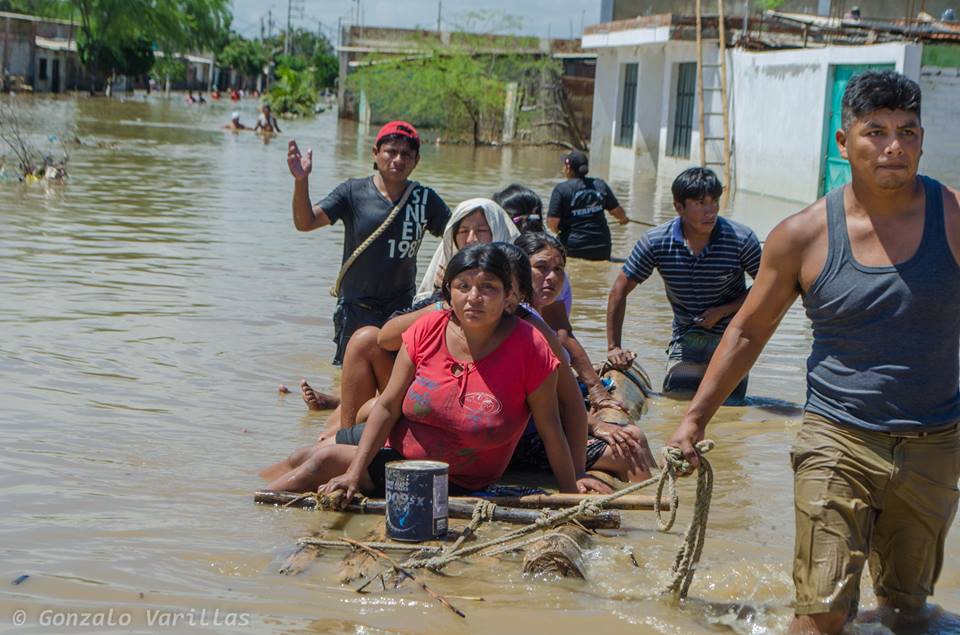- Mongabay Latam spoke with scientists who contributed to the latest Intergovernmental Panel on Climate Change (IPCC) report about the effects in Latin America, opportunities for mitigation and adaptation and the contributions of Native cultures.
- IPCC released the latest report in March as a synthesis summarizing the six previous reports it has issued on the situation of the planet since 2015.
- The new scientific report warns once again of increased global warming, but also mentions that solutions exist with the help of technology and local communities.
The effects of rising global temperatures are becoming increasingly apparent. Heat waves, droughts, torrential rains and flooding are becoming more frequent. In the first three months of 2023, Latin America has witnessed a prolonged drought and destructive forest fires in Chile, intense rains and floods in Brazil that left more than 60 dead and Cyclone Yaku and heavy rains and mudslides in Peru, among other extreme events that experts say are becoming more frequent and severe due to global warming.
“Human-caused climate change is already affecting many weather and climate extremes in every region across the globe. This has led to widespread adverse impacts on food and water security, human health and on economies and society and related losses and damages to nature and people,” according to the Sixth Assessment Report of the Intergovernmental Panel on Climate Change (IPCC). The report, released in March, summarizes the six reports on the global situation produced by scientists around the world since 2015.

In the report, experts repeat their warning that measures are urgently needed to curb global warming and ensure a sustainable and liveable world. Although time is running out to curb the global temperature rise, the experts say there are several viable and effective ways to reduce greenhouse gas emissions and adapt to climate change.
The goal is to prevent global temperatures from exceeding 1.5 degrees Celsius above pre-industrial values (i.e., the temperature between 1850 and 1900). Currently, the global increase is of 1.1 degrees Celsius. As a result, more frequent and more intense meteorological events have occurred, generating increasingly dangerous impacts on nature and people in all regions of the world, according to the report.
How is Latin America being affected by climate change? The IPCC report Climate Change 2022: Impacts, Adaptation and Vulnerability confirms that Central and South America are “highly exposed, vulnerable and strongly impacted by climate change,” a situation further aggravated by inequality, poverty and increasing deforestation.

Mongabay Latam spoke with Latin American scientists who contributed to the latest IPCC report about impacts in the region, opportunities for mitigation and adaptation, and the contributions already being made by Indigenous communities.
Climate Change in Latin America
“The increase in average temperatures, rainfall levels or extreme events vary from one region to another. In southeastern South America, in Chile and Argentina, and also in northeastern Brazil, there has been a significant reduction in rainfall that is projected to continue,” said Carolina Vera, vice president of IPCC Working Group I and director of the Franco-Argentine Institute for the Study of Climate and its Impacts.
Vera also said that dry spells are being seen across most of the regions of South America, a situation that can lead to meteorological droughts or rainfall deficits, agronomic droughts involving decreased water in the soil and hydrological droughts or reduced water flows.

Two other issues have worsened in the southern region of the continent, Vera said. First is the spate of forest fires associated with an increase in temperature, dry conditions and strong winds. Second is the shrinking of glaciers, affecting the availability of water for natural ecosystems and human populations.
Global greenhouse gas emissions have continued to increase, the IPCC report notes, with uneven historical and current contributions from unsustainable energy use, land use change, lifestyles and consumption and production patterns across regions, between countries and between individuals.
“We know that Latin America is a very vulnerable region to climate change for many reasons, from historical [factors] to inequity and injustice. In addition to the socioeconomic circumstances of different residents, for example, the high level of dependency of some economies in the region,” said Paola Arias, a professor at the University of Antioquia, Colombia, and review editor of the IPCC report.
“Latin America is a region where adaptation to climate change has advanced very slowly, largely because there are barriers that do not favor adaptation,” Arias said. “In our region, these barriers have to do with the fact that we still have enormous levels of poverty, inequality and injustice. When you have societies living under these conditions, adaptation is much more complex.”

Arias also said that adaptation in regions like Latin America requires more funding not only for climate change mitigation but also emissions reductions. “The flow of funding has not been at the speed that is required. This lack of funding is undoubtedly a fundamental element for adaptation in our regions.”
There have been successful examples of adaptation in the region, although on a small scale, Arias said. “Latin America is a region with enormous biodiversity, with areas of the greatest diversity on the planet such as the Andes or the Amazon, so ecosystems become fundamental in our process of adaptation, mitigation and climate change.”
Local experiences of adaptation
“I have water; I don’t need someone to sell it to me,” said María Binda Gutiérrez, who grew up in the Quebrada León community in Santa Cruz, Bolivia, and bought land in the Alto Espejo forestry community in the municipality of El Torno some 15 years ago.

Gutiérrez is part of the project known as Reciprocal Water Agreements (Acuerdos Recíprocos de Agua), an initiative that seeks to raise awareness about water protection. It advocates for the notion that protecting water is not only the responsibility of those who live near the headwaters of rivers, high in the mountains, but also of those who live in cities or along the watercourses in the middle basin and also benefit from the resource.
These agreements allow the residents of cities and towns in the lower part of the basin to create a fund to support upstream farmers in their efforts to protect water sources. So far, the proposal promoted by Fundación Natura has succeeded in conserving a little more than 1.48 million acres across 80 municipalities in Bolivia with the participation of 24,000 farmers. This experience is an example of how local communities are responding to climate change.
“The good news is that, at least from the scientific point of view, we have alternatives to get out of this critical situation. What is needed now is the political will to implement these alternatives,” said Carlos Méndez, an associate researcher at the Venezuelan Institute for Scientific Research and editor and reviewer of the IPCC report.
Méndez said the IPCC’s new synthesis report shows that other knowledge systems, such as Indigenous and local knowledge, should be incorporated into climate change mitigation and adaptation. “Latin America has great opportunities to formulate adaptation solutions, and let’s remember that the Latin American territory is well conserved, which means that from the mitigation point of view, there are also great opportunities. The challenge is to achieve the integration of both, so that mitigation does not have negative impacts on the population,” he said.

Indigenous knowledge about ancestral water management is extremely important for adaptation measures in the Andean region,” Méndez explained. For example, the Indigenous custom of storing ice in high areas of the Andes to ensure water supply.
The IPCC report points out that equity, climate justice, social justice, inclusion and just transition processes can enable ambitious adaptation and mitigation actions and climate-resilient development. “Adaptation outcomes are enhanced by greater support for regions and people with the greatest vulnerability to climate hazards. Integrating climate adaptation into social protection programs enhances resilience.”
Something that the report points out very clearly, Paola Arias said, is that adaptation and mitigation options already exist; there’s no need to invent them because there are examples of effective strategies from the community level. “The possibilities are there; the issue is that we need efficient and fair climate action that also looks at other aspects such as equity, social justice and reducing gaps,” she said.
The IPCC report also states that promoting sustainable development for all requires enhanced international cooperation, including better access to adequate financial resources, particularly for vulnerable regions, sectors and groups. It also depends on inclusive governance and coordinated policies. “The choices and actions implemented in this decade will have impacts now and for thousands of years to come,” the report says.

Paulina Aldunce, a researcher at the Center for Climate and Resilience Research in Chile who was also part of the core team that drafted the synthesis report, warns that if we want to meet the goal of limiting the global temperature rise to 1.5 degrees Celsius, we must reduce greenhouse gas emissions by 50% by 2030. However, she pointed out that emissions are not going down.
“We have to move fast because we have technology. What we really need is more transformational adaptation, doing things differently from how we do them now,” Aldunce said. “We must have more funding and a greater capacity to provide complete and truthful information. That is very important. But also [we must] motivate the population to become part of this. We cannot leave everything in the hands of companies and governments, which is obviously fundamental and they are primarily responsible. … If any of us, as citizens of civil society, remain on the sidelines, we are not going to make it. That is the challenge.”
Source : Mongabay
















